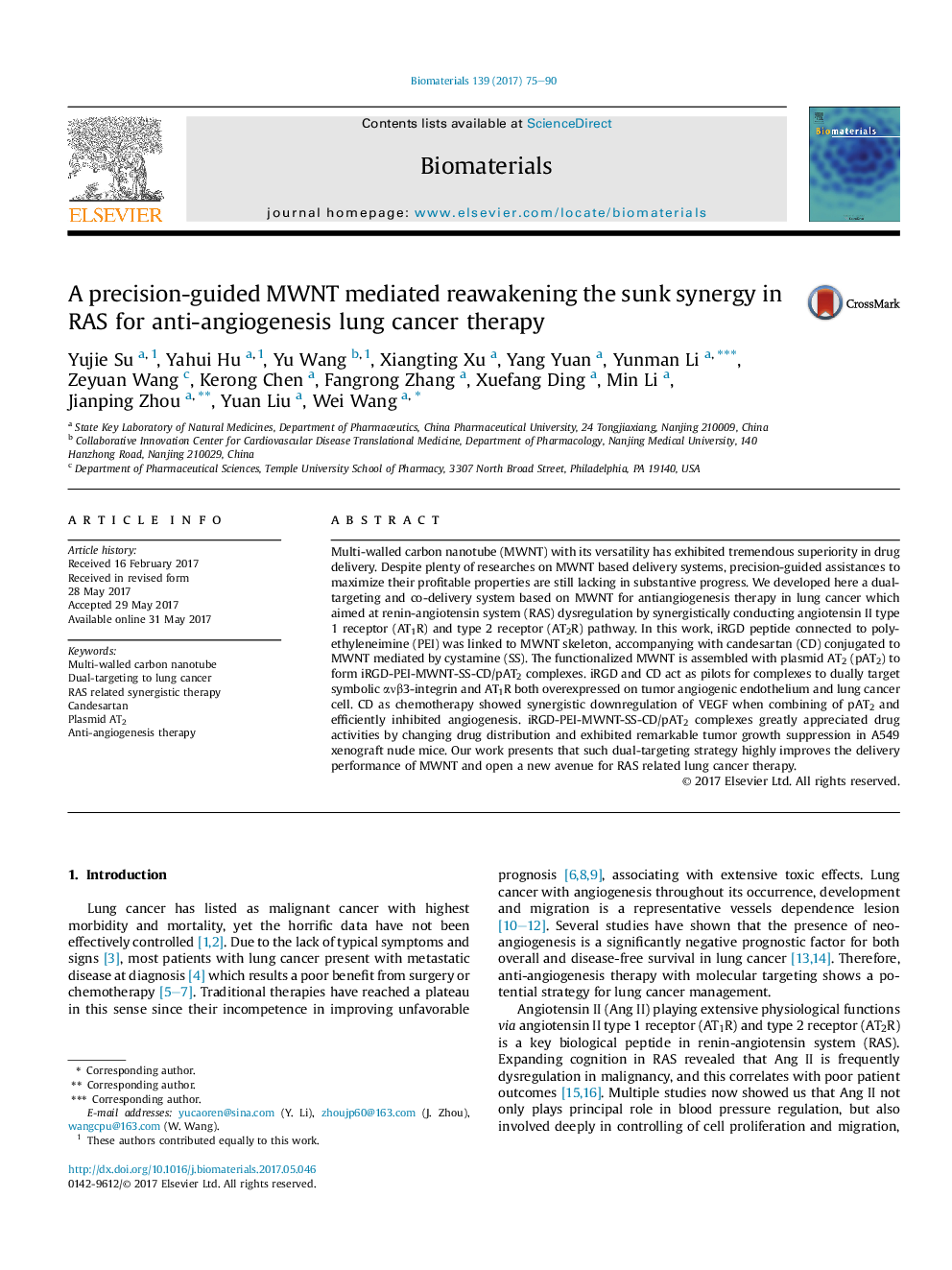| Article ID | Journal | Published Year | Pages | File Type |
|---|---|---|---|---|
| 6450674 | Biomaterials | 2017 | 16 Pages |
â¢The ligands modified MWNT targets to both tumor endothelial and parenchymal cells.â¢CD and iRGD greatly promote the cellular uptake and transfection efficiency of MWNT.â¢Cellular internalization of ligands modified MWNT is endosome-lysosome pathway.â¢The complexes appreciate CD in antitumor application by altering its distribution.â¢Co-delivery CD and pAT2 synergistically inhibit angiogenesis by down regulating VEGF.
Multi-walled carbon nanotube (MWNT) with its versatility has exhibited tremendous superiority in drug delivery. Despite plenty of researches on MWNT based delivery systems, precision-guided assistances to maximize their profitable properties are still lacking in substantive progress. We developed here a dual-targeting and co-delivery system based on MWNT for antiangiogenesis therapy in lung cancer which aimed at renin-angiotensin system (RAS) dysregulation by synergistically conducting angiotensin II type 1 receptor (AT1R) and type 2 receptor (AT2R) pathway. In this work, iRGD peptide connected to polyethyleneimine (PEI) was linked to MWNT skeleton, accompanying with candesartan (CD) conjugated to MWNT mediated by cystamine (SS). The functionalized MWNT is assembled with plasmid AT2 (pAT2) to form iRGD-PEI-MWNT-SS-CD/pAT2 complexes. iRGD and CD act as pilots for complexes to dually target symbolic ανβ3-integrin and AT1R both overexpressed on tumor angiogenic endothelium and lung cancer cell. CD as chemotherapy showed synergistic downregulation of VEGF when combining of pAT2 and efficiently inhibited angiogenesis. iRGD-PEI-MWNT-SS-CD/pAT2 complexes greatly appreciated drug activities by changing drug distribution and exhibited remarkable tumor growth suppression in A549 xenograft nude mice. Our work presents that such dual-targeting strategy highly improves the delivery performance of MWNT and open a new avenue for RAS related lung cancer therapy.
Graphical abstractDual-targeting modified MWNT with iRGD and CD highly recognized cancer cells and tumor new vessels in a collaborative way, and spread deeply into the extravascular tumor parenchyma. With CD and pAT2 synergistically conducting AT1R and AT2R pathway, the energetic tumor then showed angiogenesis inhibition and apoptosis.Download high-res image (385KB)Download full-size image
